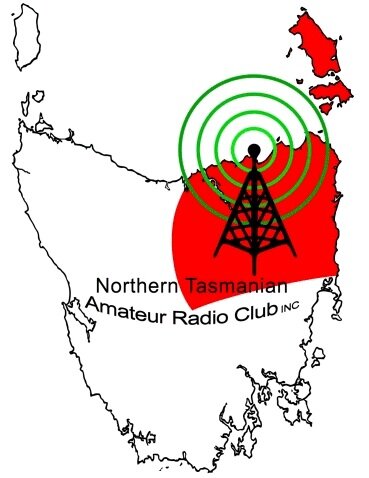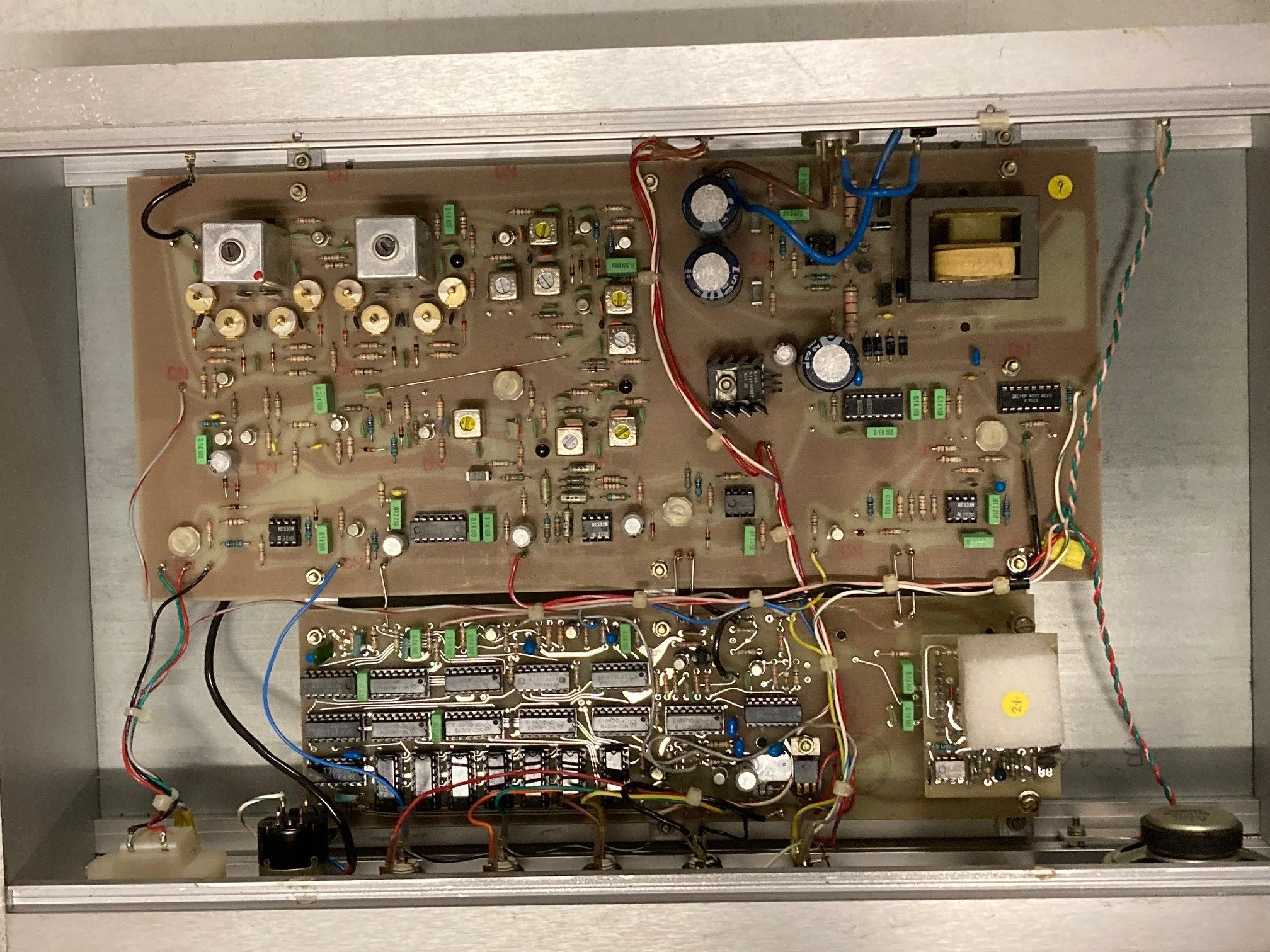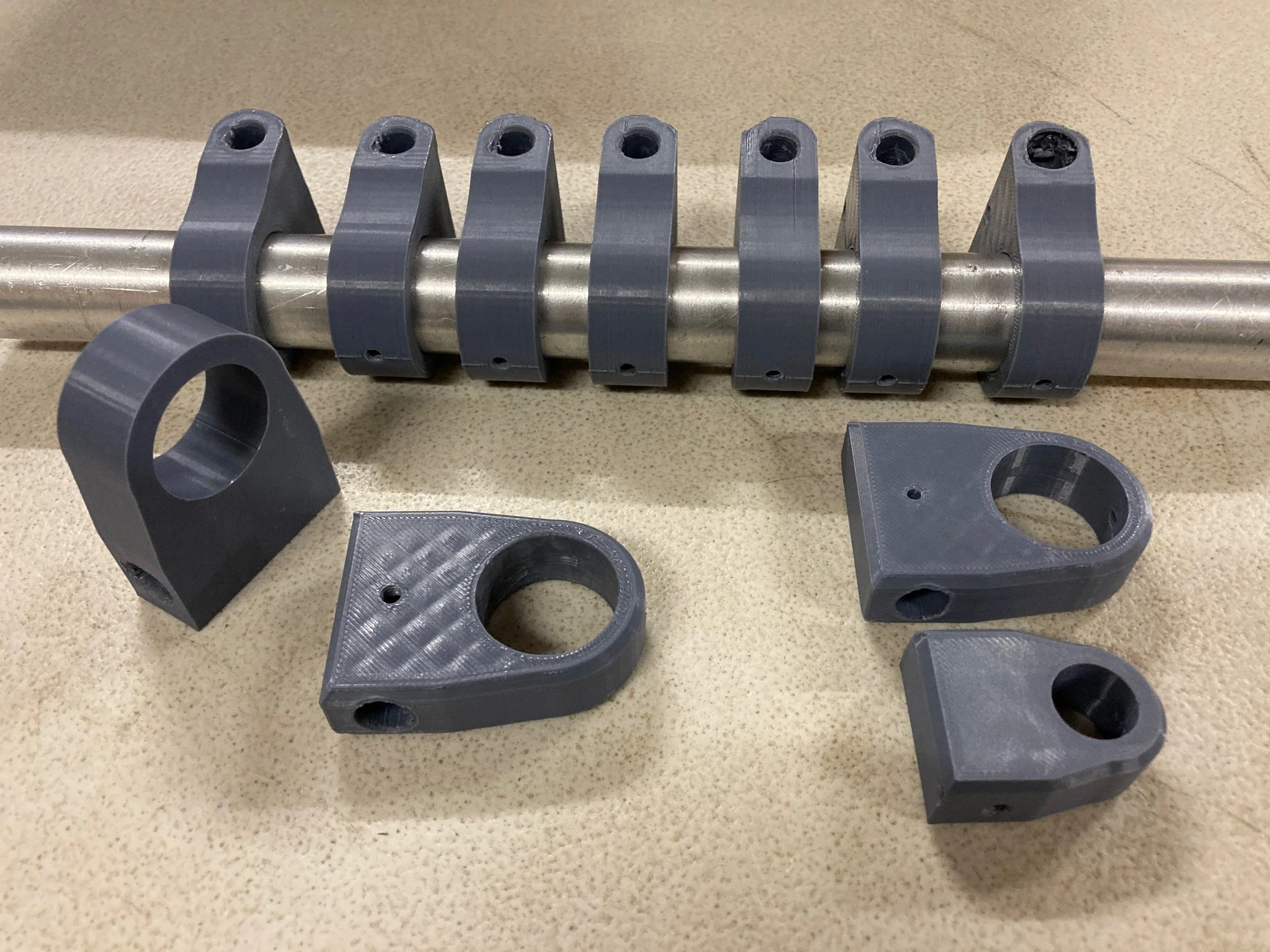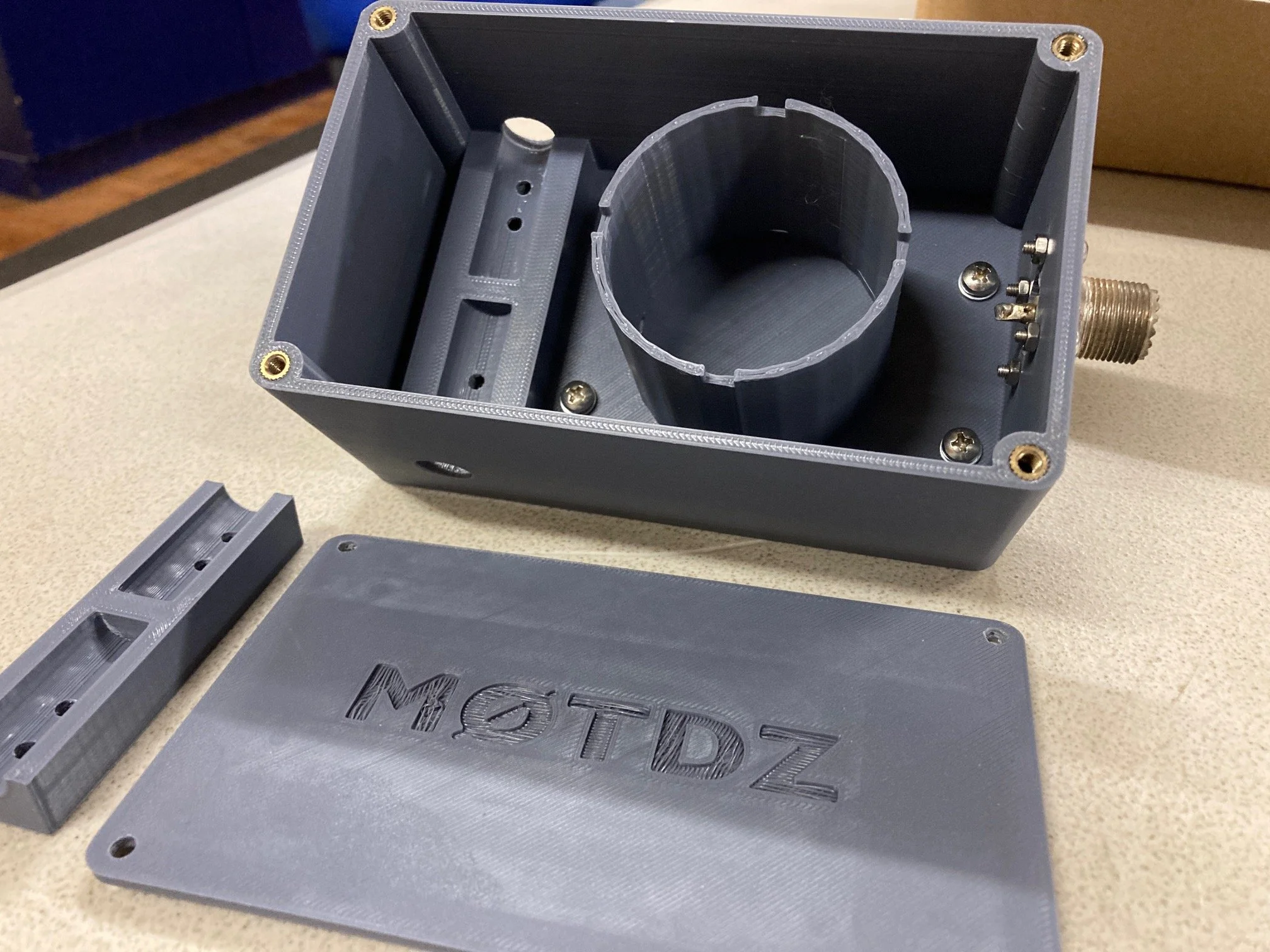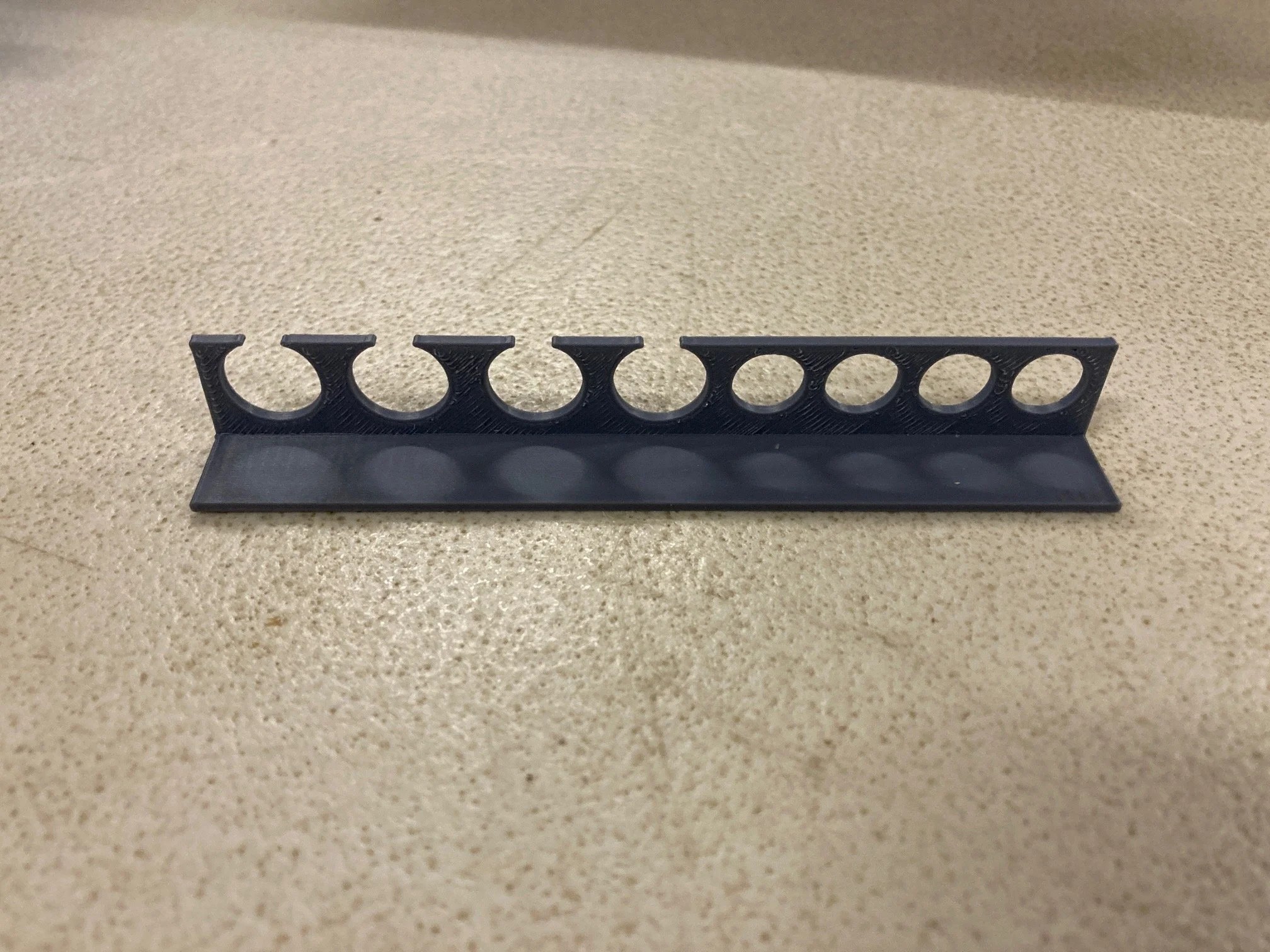Broadcast - 1 Sept 2024
How many of you can remember the following broadcast message: "This is VNG Lyndhurst, Victoria, Australia on 4.5, 7.5 or 12 MHz. VNG is a standard frequency and time signal service of the Australian Telecommunications Commission. This is VNG Lyndhurst, Victoria, Australia on 4.5, 7.5 or 12 MHz."
In fact you probably heard the announcement every fifteen minutes like clockwork with the in-between time period filled with a 1kHz tone every second. This broadcast standard frequency and time signal service first went to air in 1964 and continued until 1987. After which it relocated to Shanes Park Llandillo in NSW, until finally ceasing operation in 2002.
This sets the scene, because last technical night Lionel Vk7ZLB, brought in an actual VNG Time signal receiver and decoder. This one came from a very local airport and I can only assume that would have been similar at every other larger airport in Australia. Manufactured by G.E.D. and named V.N.G. Receiver Type 107. It is a rack mountable unit and contains a crystal controlled receiver set up to operate on 4.5 and 7.5 MHz which is selectable from the front panel. Audio transmission monitoring is also available on the front panel via an inbuilt speaker. The receiver unit uses the Radio VNG transmission to generate eight outputs of various pulse periodicity ranging from one pulse every minute, one pulse every second or 1 Hz, 10 Hz, 100 Hz, 1 kHz, 10 kHz, 100 kHz and 1 MHz. These are available on the eight front panel output connectors.
Very briefly Radio VNG broadcasts time in binary coded decimal, during seconds 21 to 58 and DUT-1 information during seconds 1 to 16. If you can’t quite remember what DUT-1 is…… Then the text version has a link to the REAST Presentation on UTC, also included is a link to the elegant VNG broadcast protocol document.
Radio VNG: Australia’s Standard Frequency and Time Signal Service
DUT1 - Wikipedia
REAST Presentation Night - UTC and the Leap Second - YouTube
Lionel also presented us with a piece of PMG/Telecom memorabilia in the form of a valve intercity carrier slope adjustable amplifier. It came from the original co-axial cable that runs from Launceston through Deloraine and Devonport to Burnie which formed the main voice communications system backbone between the main centres. The carrier system was an Analogue Frequency Division Multiplexed or FDM system that stacked hundreds of 3 kHz voice channels on top of each other to fill a 4MHz bandwidth system. All four sites supplied 600 Volt DC to power the repeaters.
When you are driving on parts of the old highway have you ever seen the occasional little brick building about the size that would accommodate a toilet? Well it was actually most likely a repeater site where the in ground co-axial cable surfaced so it could pass its signals through a broad band amplifiers with adjustable gain and frequency response correction. This piece of equipment came from the Launceston terminal end. Well that’s the very simple explanation.
The most notable feature of this unit is the metal envelope Siemens and Halske valves. They are designated C3g and are evidently a professional HF pentode with the glass envelope encased in an aluminium screening can. The screening can is electrically connected to the central spigot of the base. Commonly found in military equipment and were used in repeaters for undersea communications cables. Thanks Lionel, you brought back many memories.
Colin VK7ZCF brought in a non-descript cardboard box. Rather than bringing in his new item of equipment he decided to bring in its creations. Once the box was opened all was revealed and fell into logical place. It appears Colin is now the proud owner of a brand new 3D printer manufactured by Creality, model Ender-3.
The box was full of 3D printed items, Colin’s triumphs and failures. As with any new piece of equipment there is also a learning curve, this one is no exception. Some of the designs were freely available from the internet but most were Colin’s custom designs. Some amateur related items were:
A selection of Yagi element mounts for the three sizes of boom diameters that he uses. These are friction fit onto the boom and allow some level of experimentation and adjustment before finally tightening the locking screw.
Fully printed balun enclosures which included an internal former to rap the co-axial cable around.
An SO239 socketed generic breakout box.
Wall mount brackets for holding patch leads and antennas for hand helds.
SD card and USB drive holders.
Thanks Colin for showing us your progress.
Now, congratulations to Peter VK7KPC for your successful participation and gaining a certificate in the Harry Angel Memorial 80m Sprint. Peter obtained Second Place in the CW Section of the Australia and New Zealand wide competition. The 106 minute duration of this competition is to commemorate the 106 year life of Harry Angel VK4HA. Well done Peter.
As always, pictures will be available on the NTARC Web site under “Blogs” for this broadcast. NTARC Blogs
UPCOMING EVENTS
TestNet and TechNet session - Every Wednesday, TestNet/CW course on 3.580MHz from 7 pm till 7.30 pm, then a TechNet on 3.567MHz from 7.30 pm till 8.30 pm. Your host for the evening is Nic VK7WW.
Club Room Technical night session - The next session will be on Wednesday the 11th September and will commence at the usual time of 6.30 pm at the Club Room Archer Street, Rocherlea.
Coffee Morning - held every Friday in the NTARC Club rooms. Time is from 10 am to noon and we look forward to seeing you all there. So why not pop in check the QSL cards and join us for a cuppa, there is endless tea and coffee along with biscuits available for a donation.
Finally - A reminder to all members that if you have any items of news you would like added to our weekly roundup, no matter how trivial, then please email them to the Secretary at the following address news@ntarc.net all items to be received no later than 5 pm on the Friday prior to the Broadcast.
That’s all folks,
73, Stefan VK7ZSB, Secretary NTARC Inc.
